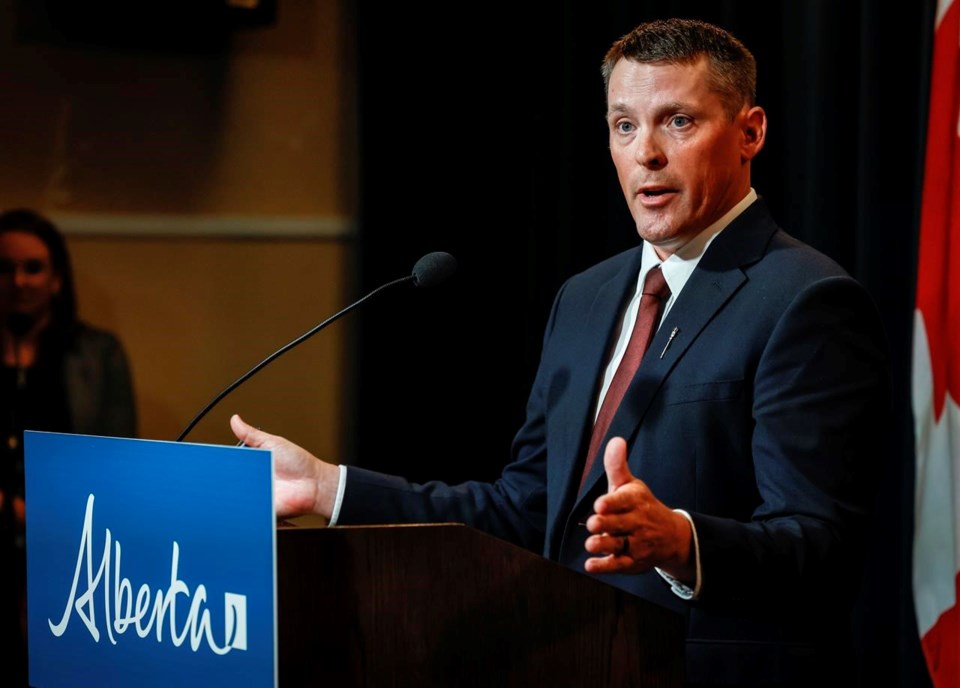EDMONTON — The Alberta government is promising reforms to reduce high auto insurances costs, but the Official Opposition says the changes are so soft and cosmetic they do little for drivers getting walloped by high premiums.
Finance Minister Nate Horner announced that as of Jan. 1, drivers with good records cannot have their premiums increased by more than September's inflation rate.
That rate was 3.7 per cent.
“Our government remains fully committed to making auto insurance affordable, sustainable and reasonable for both Alberta drivers and insurers,” Horner told a news conference Wednesday.
The announcement comes as the province moves to lift the freeze on auto insurance rate hikes at year's end.
The freeze was imposed in January to help Alberta drivers paying among the highest premiums in Canada.
Good drivers will be defined as those who have not had one or more at-fault accidents in the last six years or have not been convicted of a traffic infraction under the Criminal Code in the last four years. They must also not have had any major traffic convictions or more than one minor traffic conviction in the last three years.
A Criminal Code conviction would include driving under the influence.
Major traffic convictions would include speeding in a school zone, distracted driving, driving more than 50 kilometres an hour over the posted speed limit, or failing to remain at the scene of a collision.
Minor convictions include other speeding tickets and failing to obey a yield or stop sign.
Photo radar violations don't count.
Horner said he didn’t know how many Alberta drivers would qualify as good drivers under this criteria.
“We don't know that precisely, but we're confident it's definitely the majority of Albertans,” he said.
“We’ll know that better as the rate filings unfold.”
Horner said reduced driving during the COVID-19 pandemic spiked profits for insurers, exceeding the benchmark set by Alberta’s insurance regulator — the Auto Insurance Rate Board — and further changes are needed.
The province is proposing recommendations to give the rate board the power to direct insurers to return a portion of premiums to drivers during high-profit years.
The rate board will also be granted the authority to direct insurers to lower their rates if deemed unreasonable.
Ratepayers will also be allowed to stagger their premium payments.
Opposition NDP house leader Christina Gray said the changes are designed to promise a lot while doing little.
She said the government’s definition of a good driving record is so narrow it will exclude most drivers along with those switching insurers.
Gray also noted that while the government is granting the rate board the authority to take action against insurers, it is not setting out clear benchmarks on when such action must kick in.
“If you've gotten two traffic tickets in the last three years, buckle up, your rates are going to soar,” Gray told reporters.
“Many Albertans will not qualify for this cap, and the insurance industry is going to come looking to get their profits from those folks.”
As well, Horner announced the province has commissioned a third-party report exploring long-term reforms to the system.
A draft report is expected by the end of the year and a final report in the spring.
This report by The Canadian Press was first published Nov. 1, 2023.
Dean Bennett, The Canadian Press



